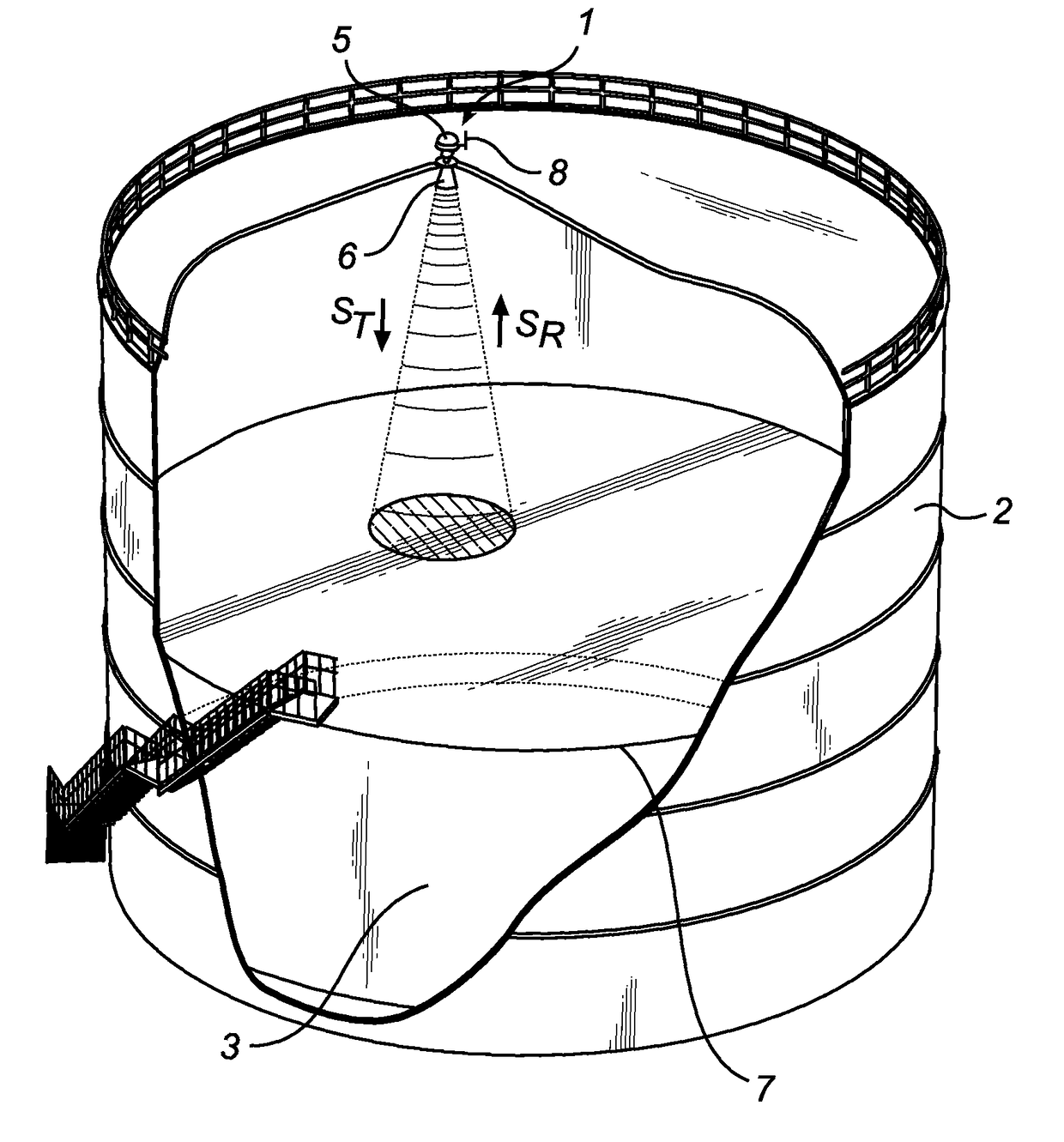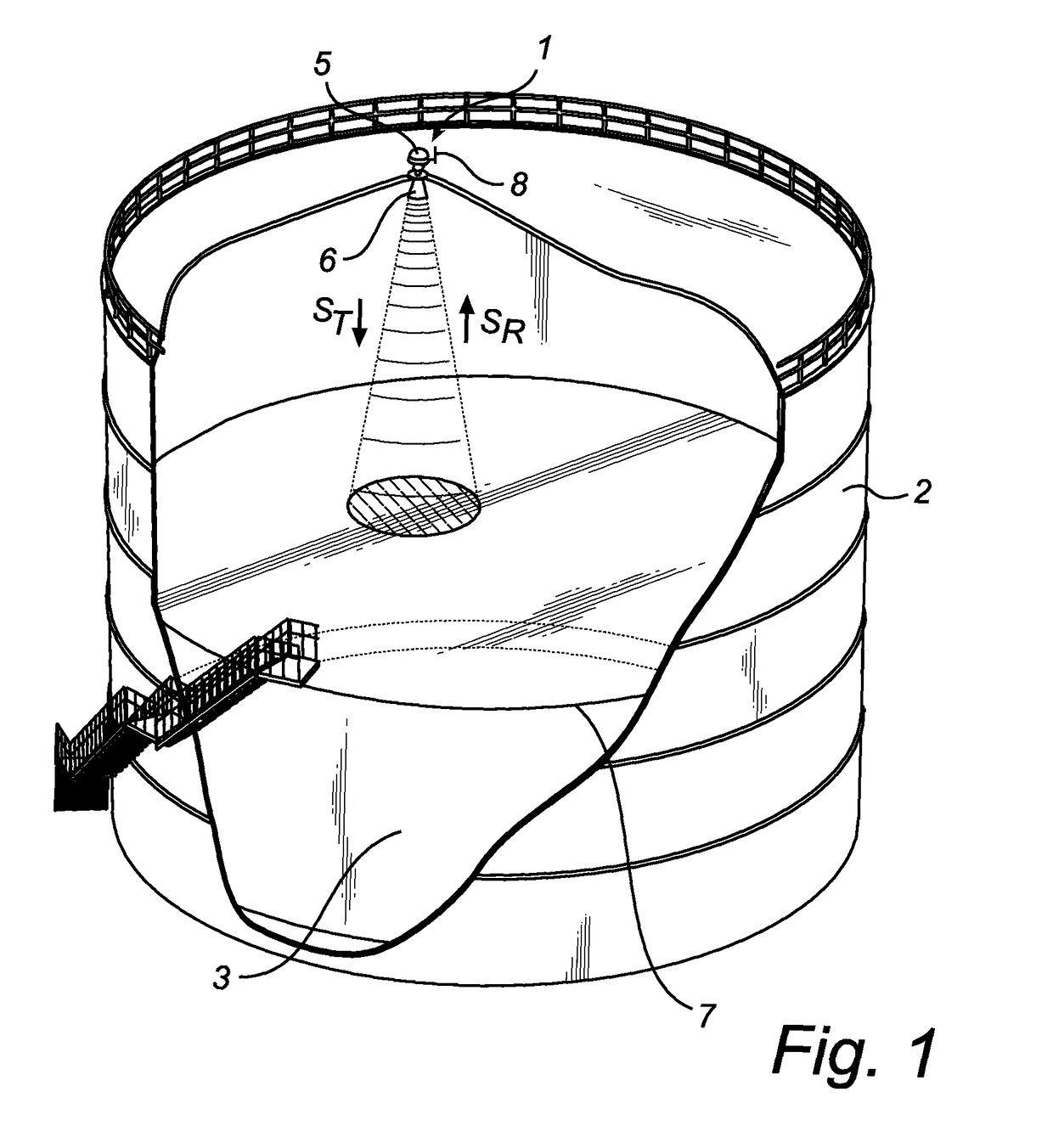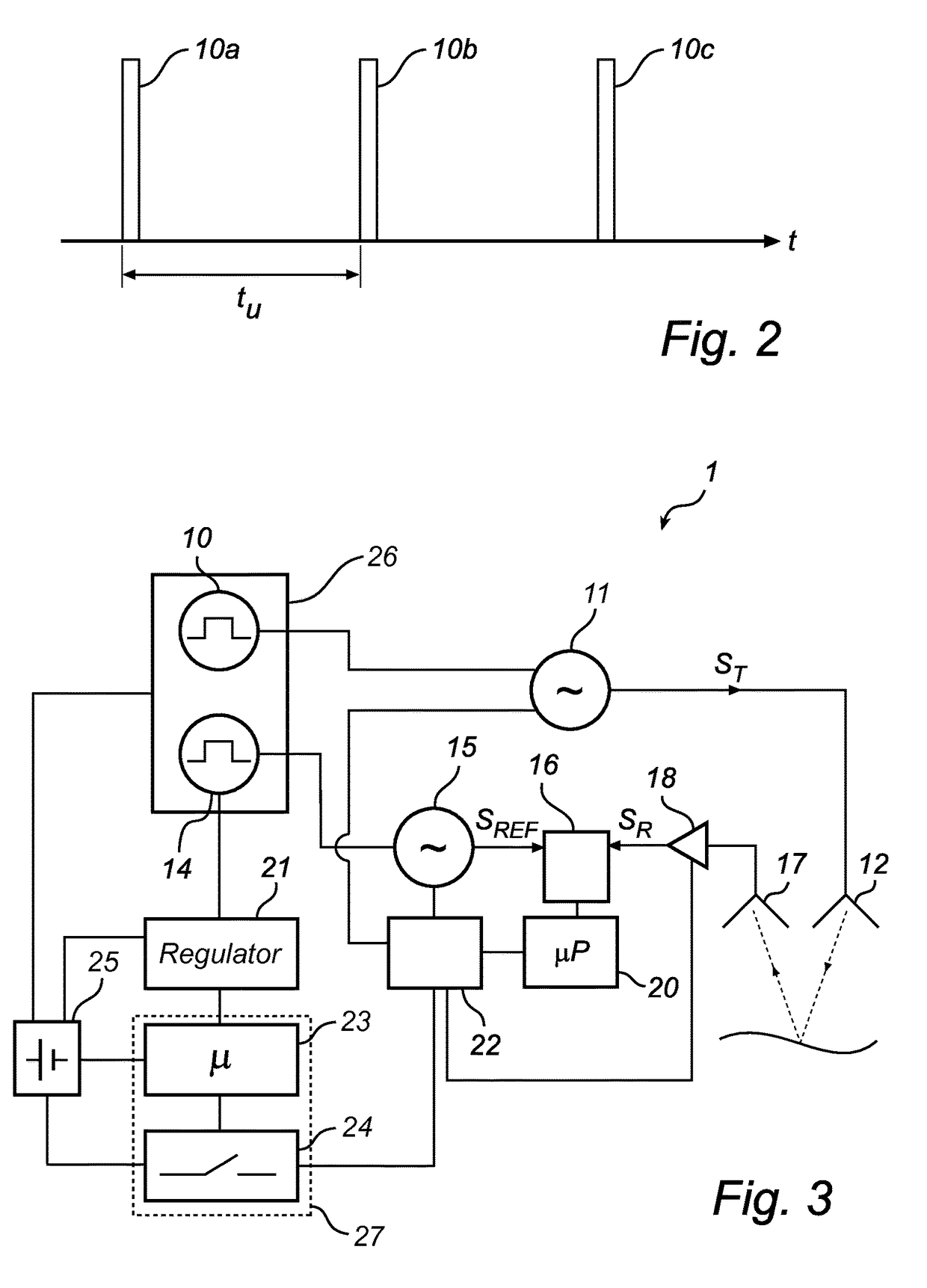Pulsed radar level gauging with efficient start-up
a pulsed, radar technology, applied in the direction of reradiation, liquid/fluent solid measurement, engine lubrication, etc., can solve the problems of hard to meet the safety requirements regarding power usage and energy storage, the amount of energy allowed to be stored, etc., to save power used for those measurements, the effect of energy-consuming signal handling
- Summary
- Abstract
- Description
- Claims
- Application Information
AI Technical Summary
Benefits of technology
Problems solved by technology
Method used
Image
Examples
Embodiment Construction
[0033]In the present detailed description, various embodiments of the level gauge system according to the present invention are mainly discussed with reference to a pulsed radar level gauge system of the non-contact type, in which an electromagnetic signal is propagated towards the product contained in the tank using a propagating device in the form of a radiating antenna, such as a cone antenna, a horn antenna, an array antenna or a patch antenna.
[0034]It should be noted that this by no means limits the scope of the present invention, which is equally applicable to a pulsed guided wave radar (GWR) level gauge system utilizing a propagating device in the form of a transmission line probe, such as a single line probe (including a so-called Sommerfeld or Goubau probe), a two-lead probe, a coaxial probe, etc.
[0035]FIG. 1 schematically illustrates a level gauge system 1 arranged on top of a tank 2 for determining the filling level of a product 3 contained in the tank 2 using microwaves....
PUM
 Login to View More
Login to View More Abstract
Description
Claims
Application Information
 Login to View More
Login to View More - R&D
- Intellectual Property
- Life Sciences
- Materials
- Tech Scout
- Unparalleled Data Quality
- Higher Quality Content
- 60% Fewer Hallucinations
Browse by: Latest US Patents, China's latest patents, Technical Efficacy Thesaurus, Application Domain, Technology Topic, Popular Technical Reports.
© 2025 PatSnap. All rights reserved.Legal|Privacy policy|Modern Slavery Act Transparency Statement|Sitemap|About US| Contact US: help@patsnap.com



